Abstract
The highly purified major allergenic component of rye grass pollen (Group I) was used to investigate the possibility of destroying selectively the allergenic properties of an antigen, while largely retaining its original immunizing capacities. The allergen was treated under mild conditions with formalin alone or formalin plus a reactive low molecular weight additive. Certain derivatives (allergoids) showed well over 99 per cent reduction in allergenicity, determined by the histamine released from allergic human leucocytes in vitro, but were still able to combine with rabbit antibody against native antigen. Furthermore, the allergoids stimulated production (in guinea-pigs) of appreciable amounts of antibody able to inhibit native allergen-mediated human allergic histamine release in vitro and to cross-react with native antigen by PCA tests in normal guinea-pigs.
Residual allergenicity and cross-immunogenicity (by the inhibition assay) of the different formalinized derivatives varied appreciably according to the additive used in formalinization, but the cross-reactivities of the different preparations in quantitative precipitin analysis against rabbit anti-native antigen serum were similar. The residual allergenicities of individual derivatives varied by up to 1000-fold in different cell preparations, suggesting a heterogeneity of allergenic determinants. Allergoid derivatives showed no hapten-like activity in that they were unable to inhibit allergen-mediated histamine release from leucocytes.
The theoretical and practical application of allergoids is discussed, including their potential usefulness in improving the immunotheraphy of atopic humans.
Full text
PDF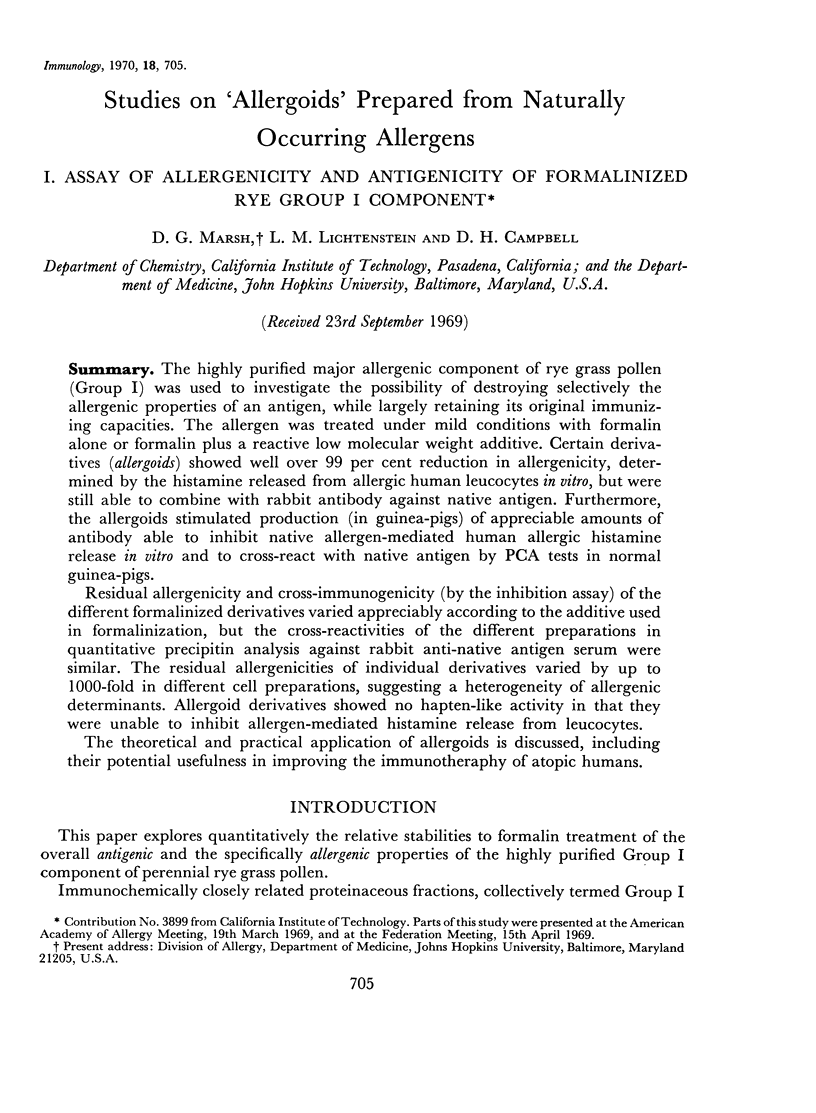
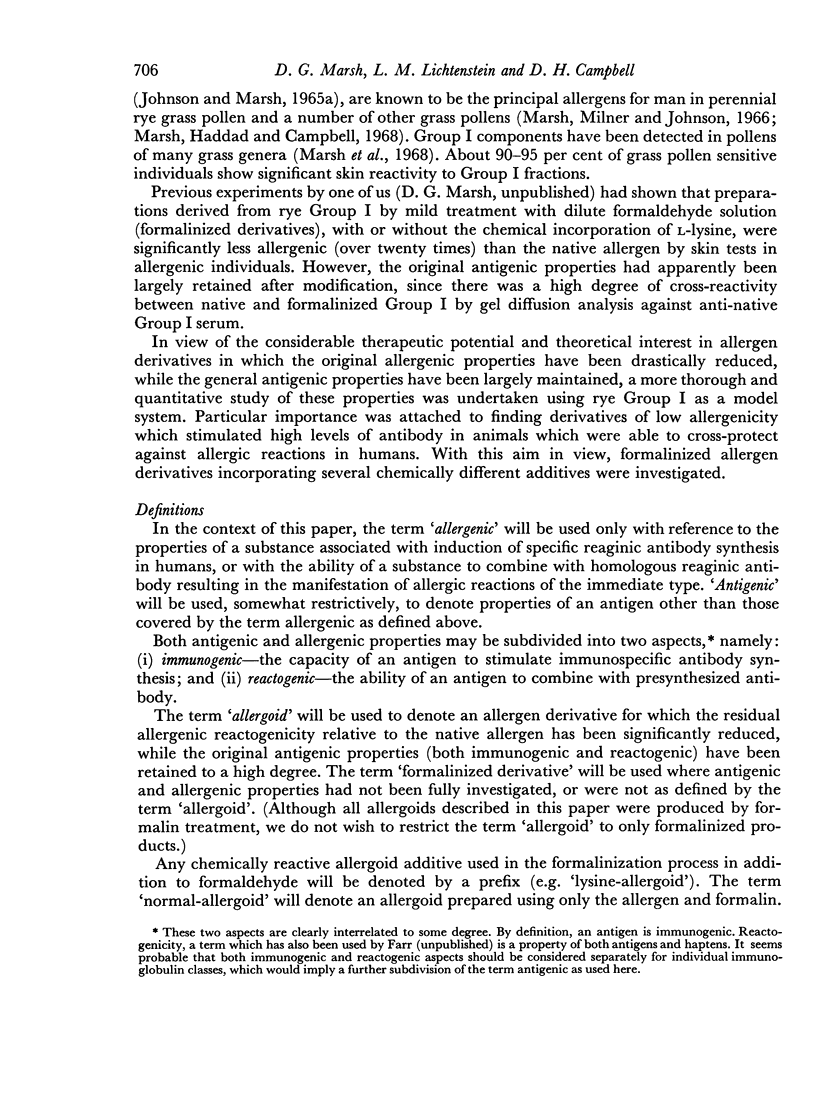
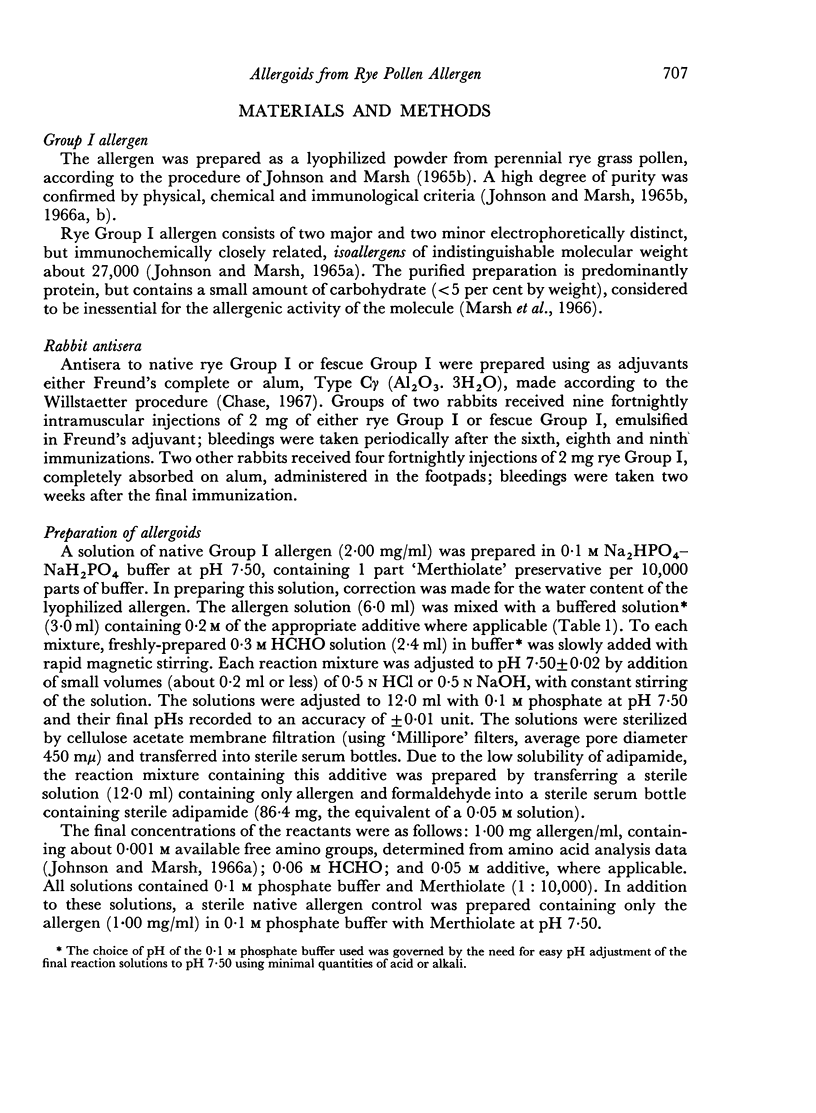
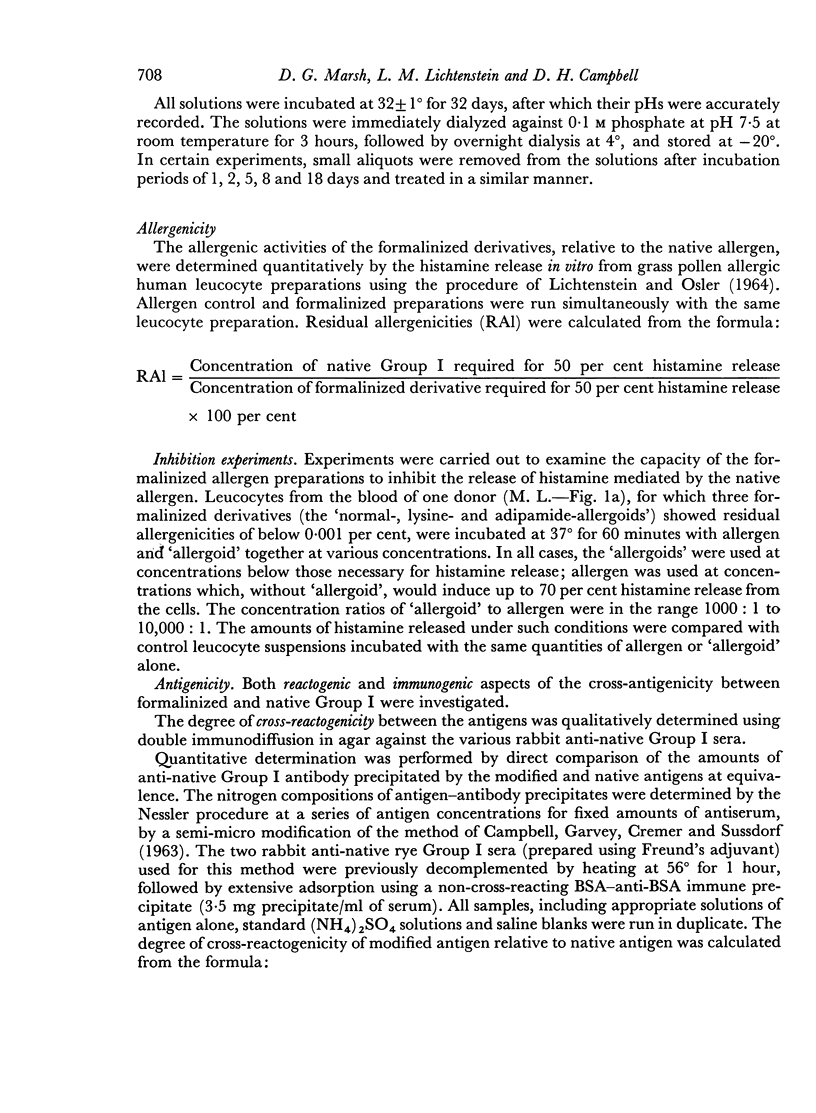
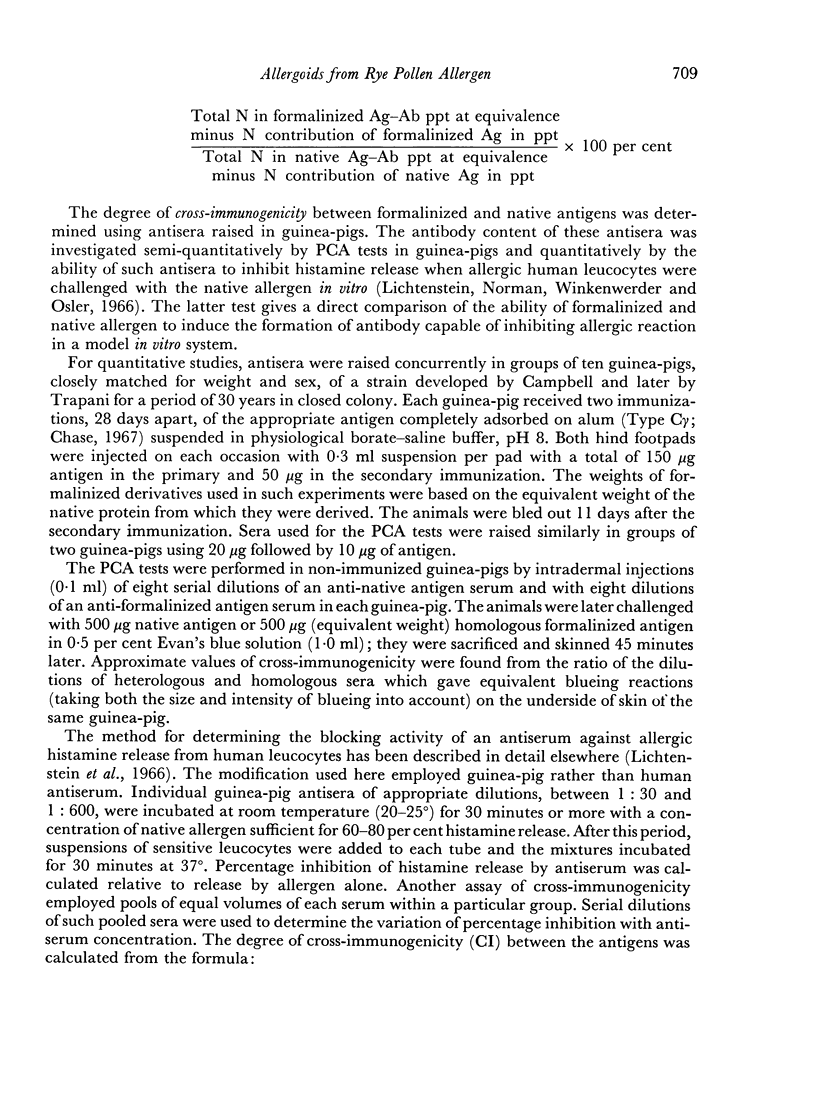
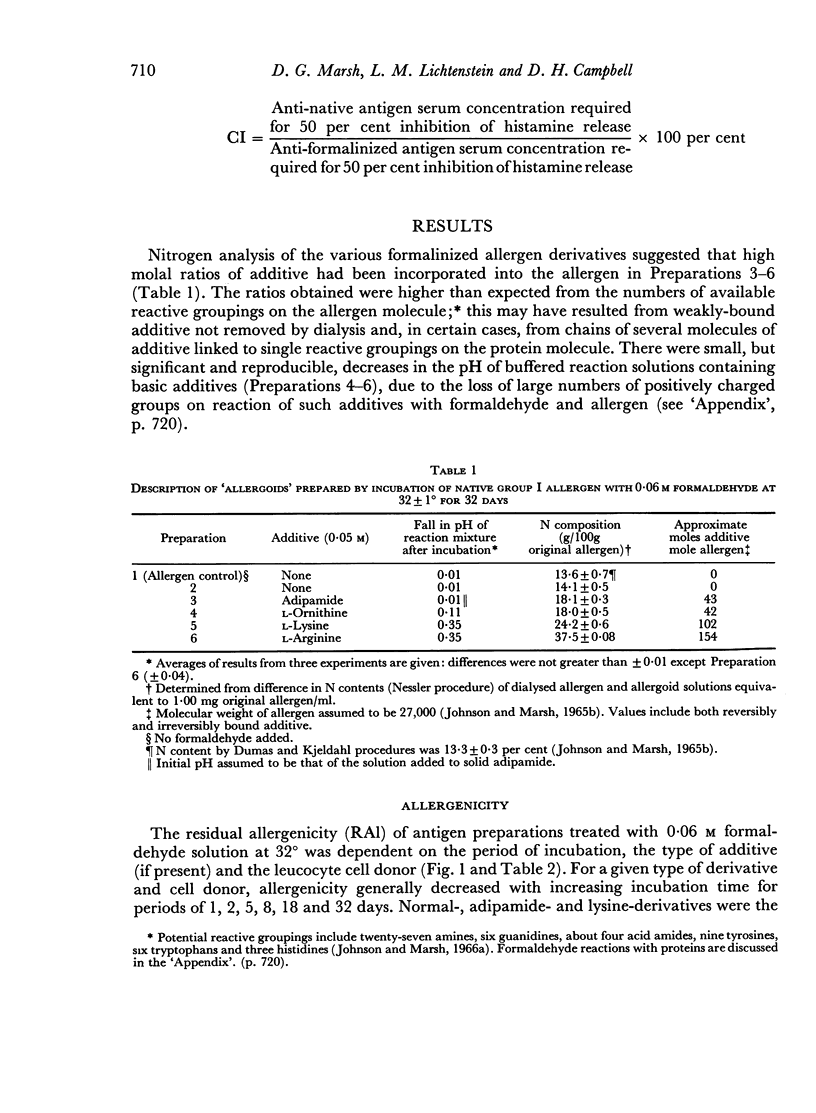
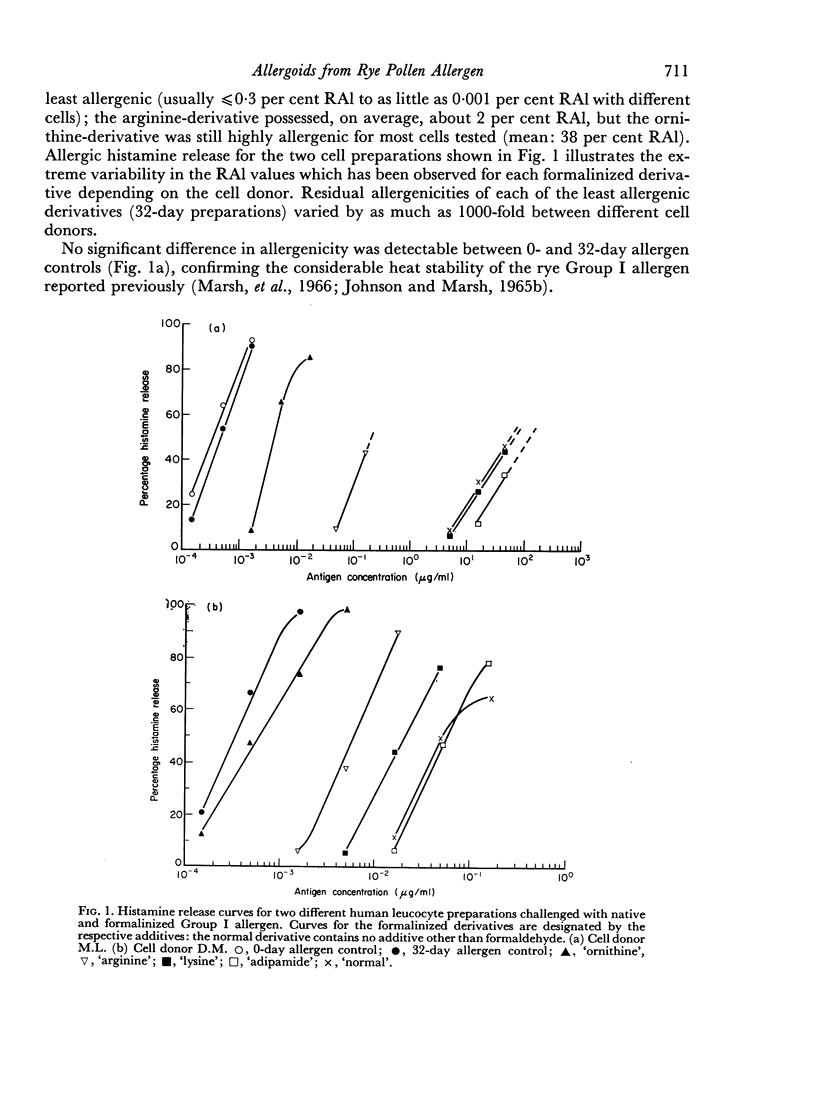
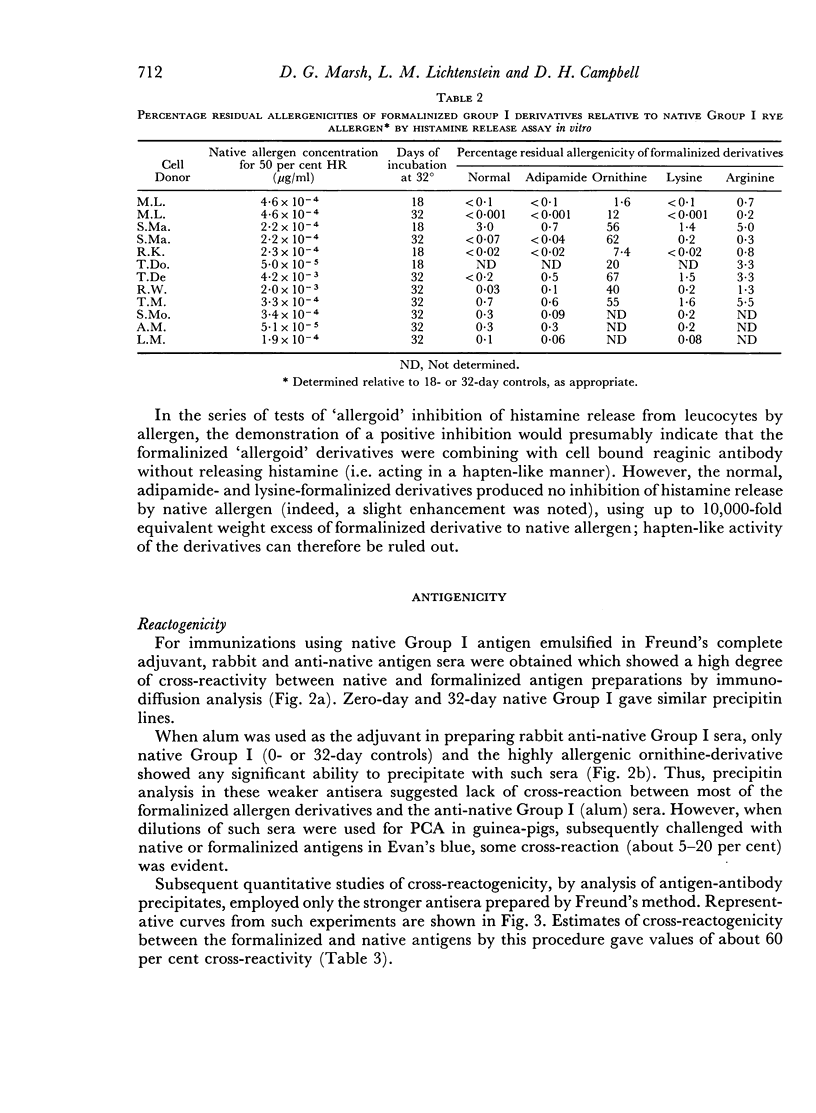

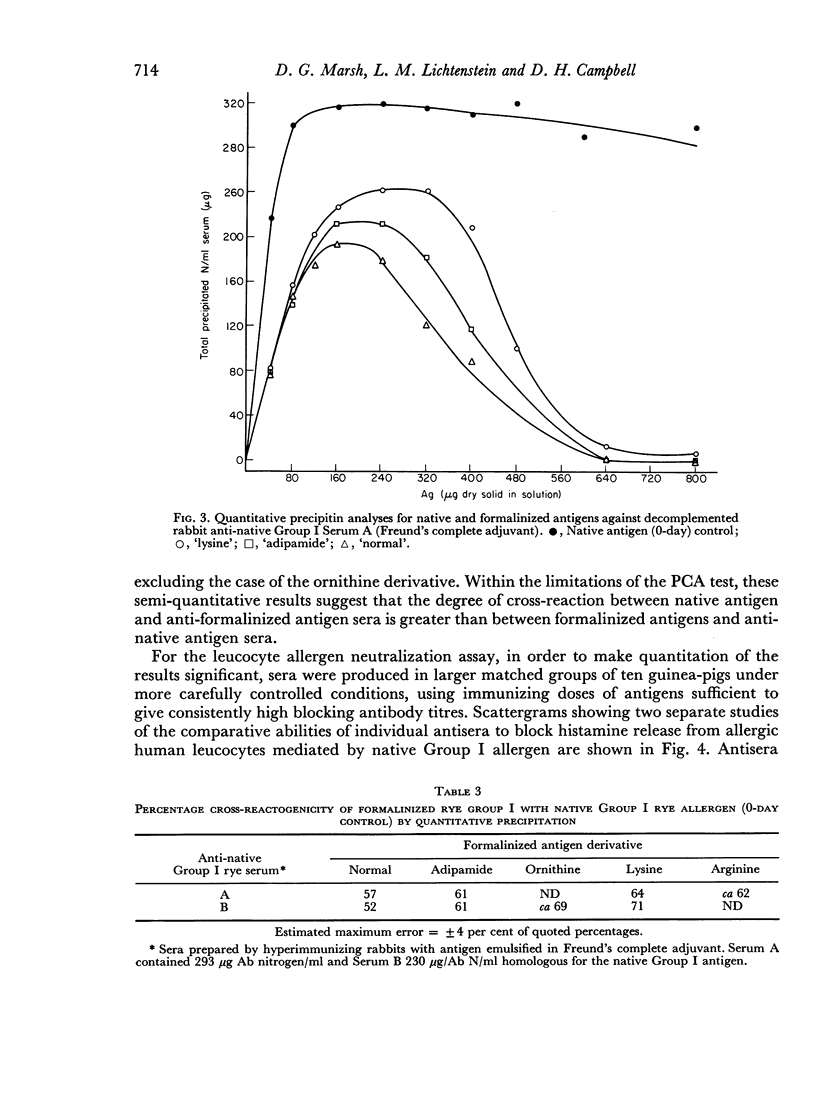
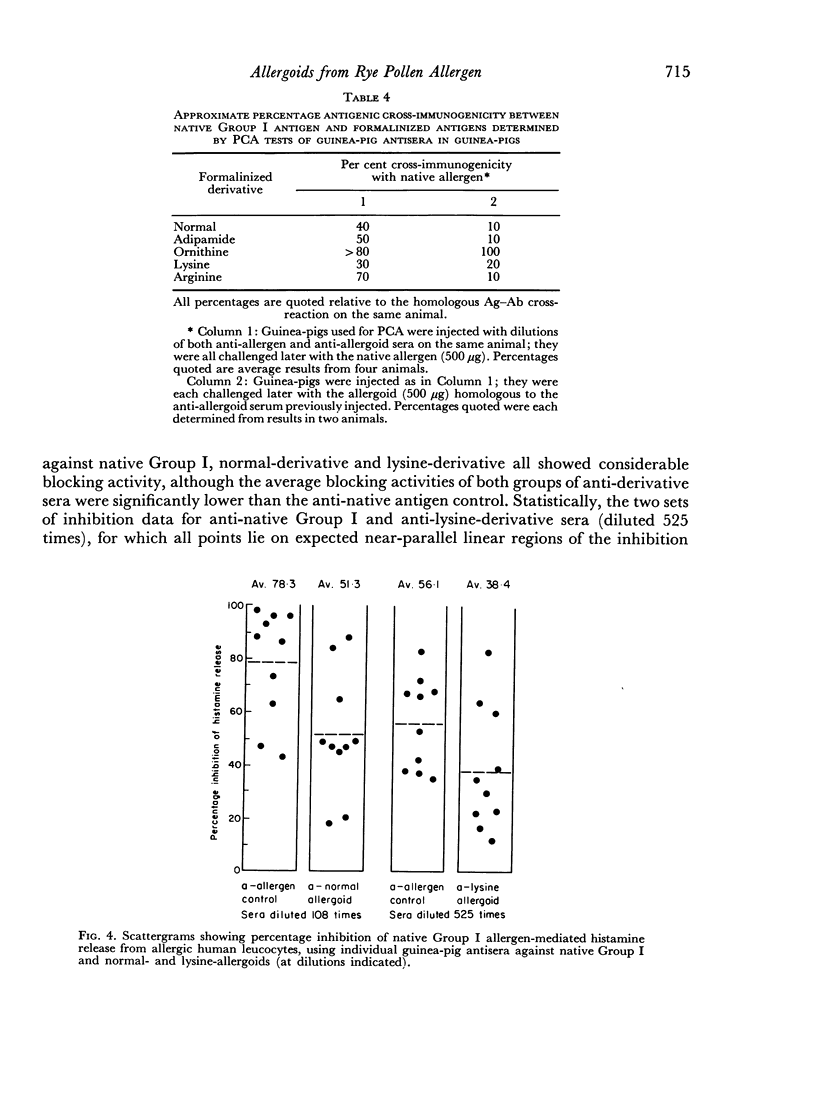

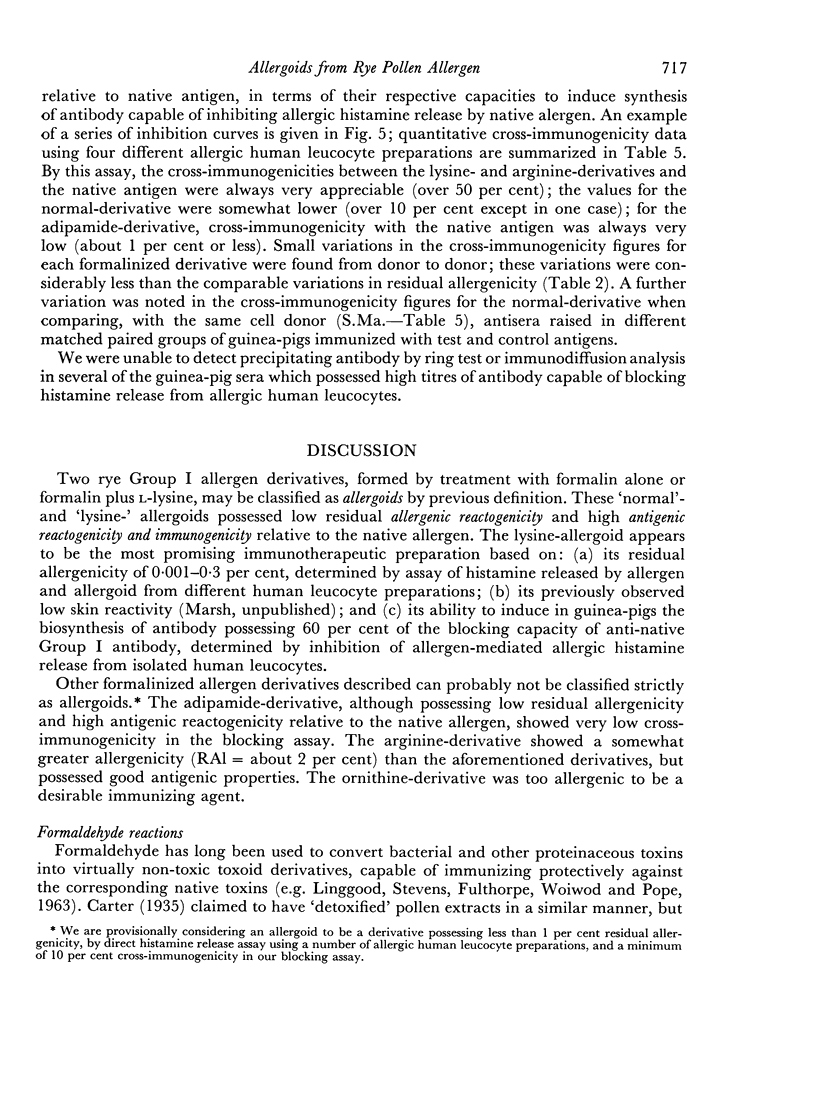
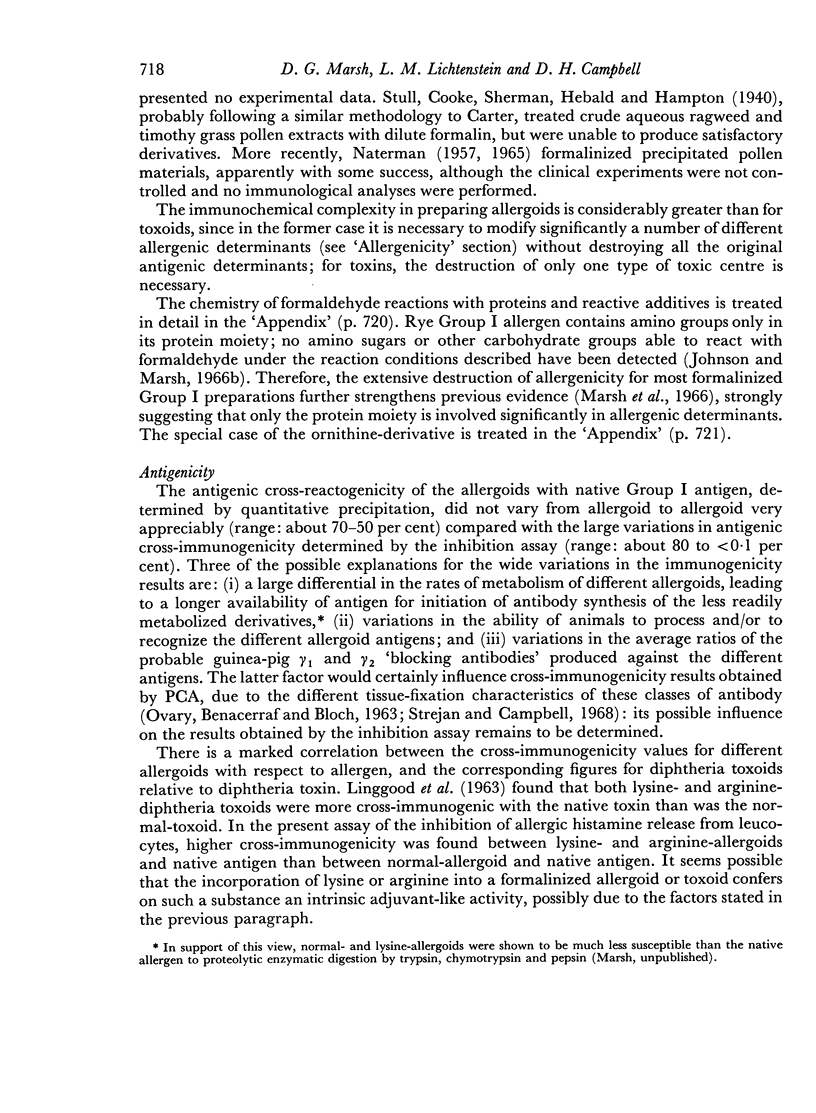
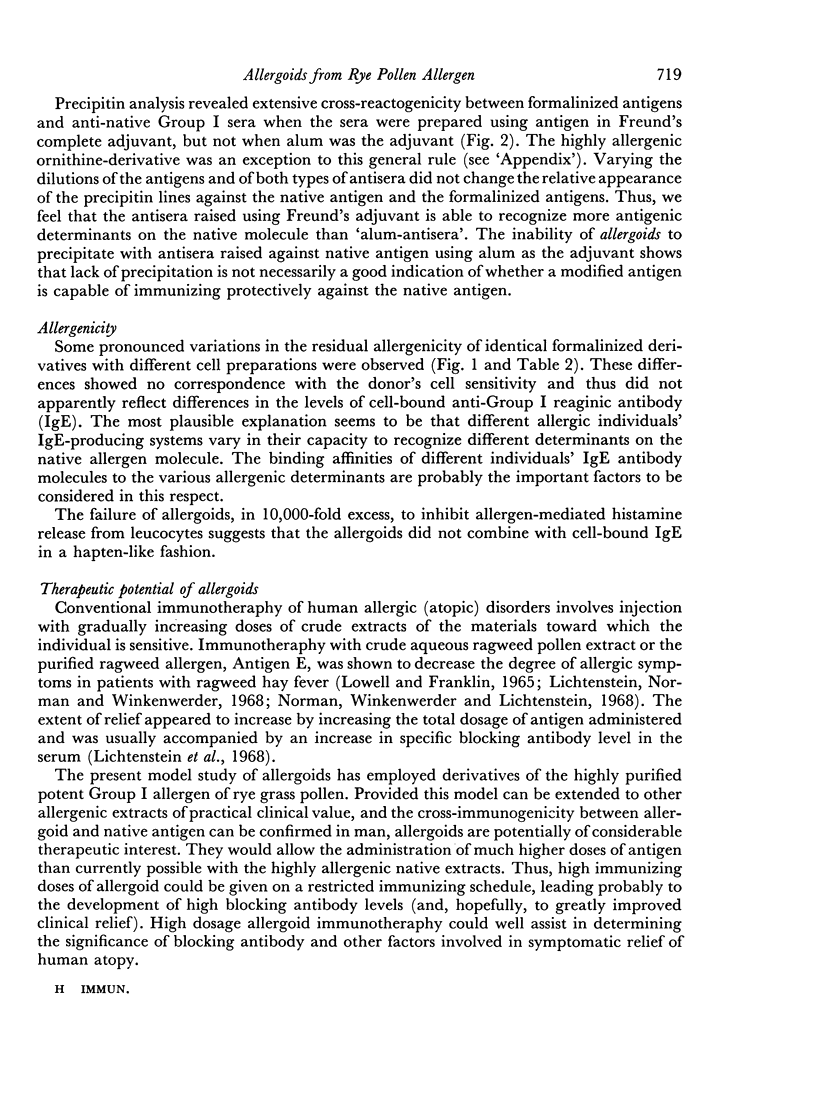
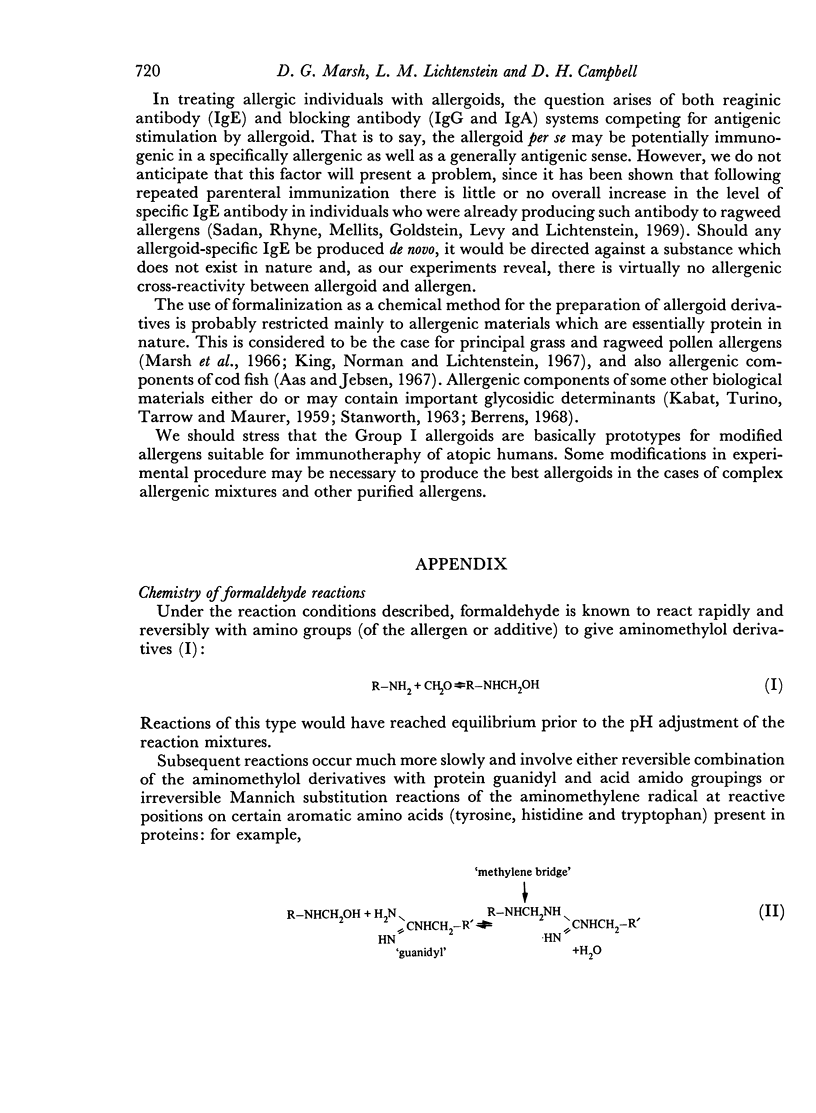
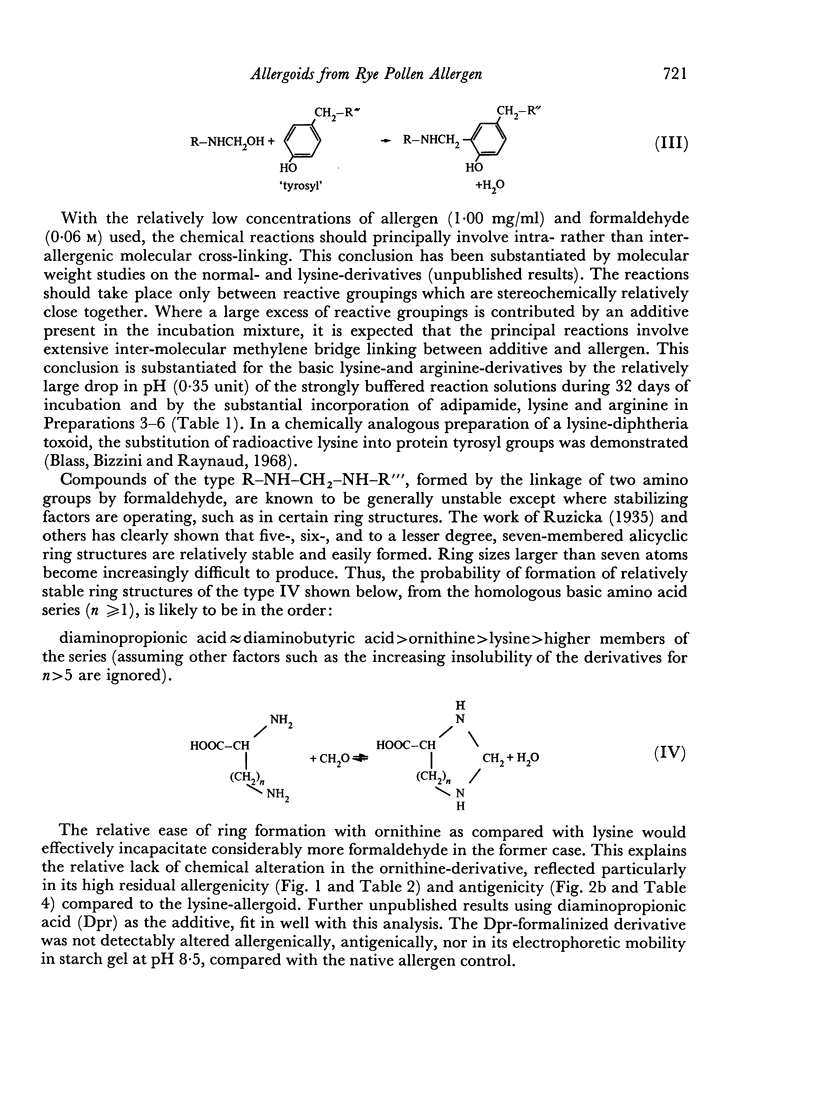
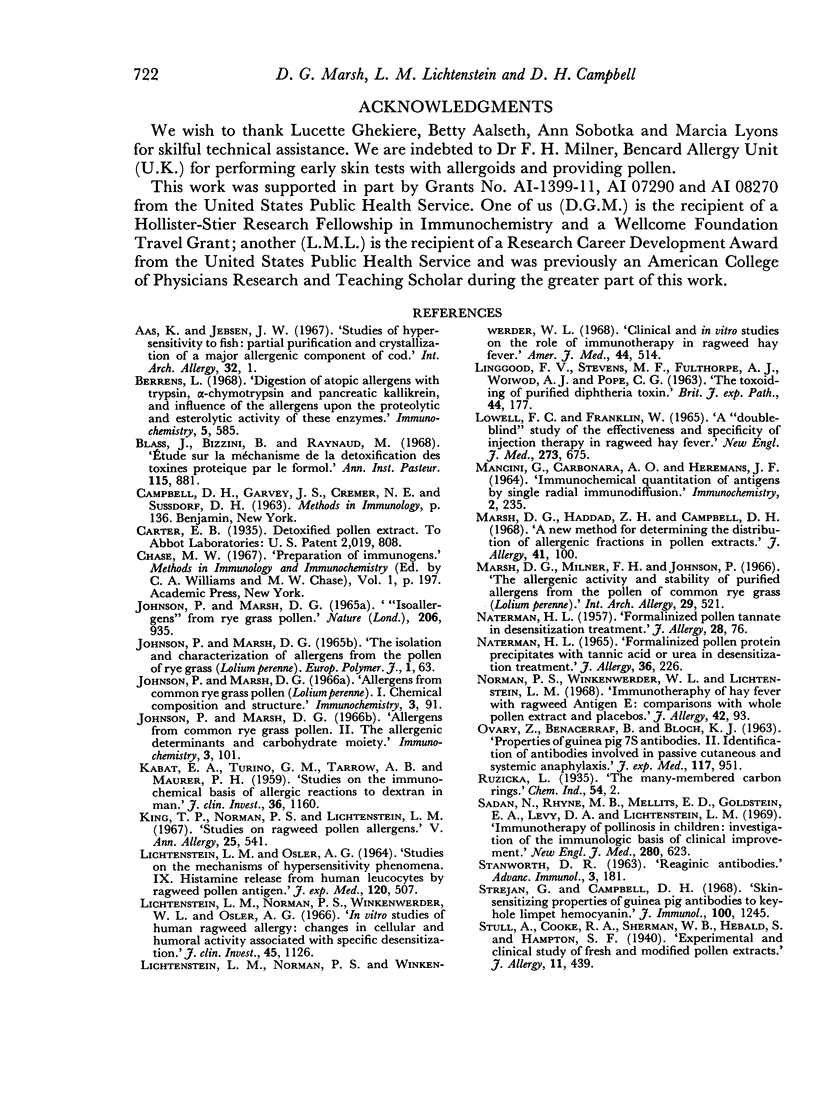
Images in this article
Selected References
These references are in PubMed. This may not be the complete list of references from this article.
- Aas K., Jebsen J. W. Studies of hypersensitivity to fish. Partial purification and crystallization of a major allergenic component of cod. Int Arch Allergy Appl Immunol. 1967;32(1):1–20. [PubMed] [Google Scholar]
- Berrens L. Digestion of atopic allergens with trypsin alpha-chymotrypsin and pancreatic kallikrein, and influence of the allergens upon the proteolytic and esterolytic activity of these enzymes. Immunochemistry. 1968 Nov;5(6):585–605. doi: 10.1016/0019-2791(68)90094-3. [DOI] [PubMed] [Google Scholar]
- Blass J., Bizzini B., Raynaud M. Etude sur le mécanisme de la détoxification des toxines protéiques par le formol. I. Incorporation de la lysine libre radioactive dans la toxine diphtérique pure, en présence du formol (détoxification dite "irréversible") Ann Inst Pasteur (Paris) 1968 Nov;115(5):881–898. [PubMed] [Google Scholar]
- Johnson P., Marsh D. G. 'Isoallergens' from rye grass pollen. Nature. 1965 May 29;206(987):935–937. doi: 10.1038/206935b0. [DOI] [PubMed] [Google Scholar]
- Johnson P., Marsh D. G. Allergens from common rye grass pollen (Lolium perenne). I. Chemical composition and structure. Immunochemistry. 1966 Mar;3(2):91–100. doi: 10.1016/0019-2791(66)90290-4. [DOI] [PubMed] [Google Scholar]
- Johnson P., Marsh D. G. Allergens from common rye grass pollen (Lolium perenne). II. The allergenic determinants and carbohydrate moiety. Immunochemistry. 1966 Mar;3(2):101–110. doi: 10.1016/0019-2791(66)90291-6. [DOI] [PubMed] [Google Scholar]
- KABAT E. A., TURINO G. M., TARROW A. B., MAURER P. H. Studies on the immunochemical basis of allergic reactions to dextran in man. J Clin Invest. 1957 Jul;36(7):1160–1170. doi: 10.1172/JCI103512. [DOI] [PMC free article] [PubMed] [Google Scholar]
- King T. P., Norman P. S., Lichtenstein L. M. Studies on ragweed pollen allergens. V. Ann Allergy. 1967 Oct;25(10):541–553. [PubMed] [Google Scholar]
- LICHTENSTEIN L. M., OSLER A. G. STUDIES ON THE MECHANISMS OF HYPERSENSITIVITY PHENOMENA. IX. HISTAMINE RELEASE FROM HUMAN LEUKOCYTES BY RAGWEED POLLEN ANTIGEN. J Exp Med. 1964 Oct 1;120:507–530. doi: 10.1084/jem.120.4.507. [DOI] [PMC free article] [PubMed] [Google Scholar]
- Lichtenstein L. M., Norman P. S., Winkenwerder W. L. Clinical and in vitro studies on the role of immunotherapy in ragweed hay fever. Am J Med. 1968 Apr;44(4):514–524. doi: 10.1016/0002-9343(68)90052-1. [DOI] [PubMed] [Google Scholar]
- Lichtenstein L. M., Norman P. S., Winkenwerder W. L., Osler A. G. In vitro studies of human ragweed allergy: changes in cellular and humoral activity associated with specific desensitization. J Clin Invest. 1966 Jul;45(7):1126–1136. doi: 10.1172/JCI105419. [DOI] [PMC free article] [PubMed] [Google Scholar]
- Lowell F. C., Franklin W. A double-blind study of the effectiveness and specificity of injecton therapy in ragweed hay fever. N Engl J Med. 1965 Sep 23;273(13):675–679. doi: 10.1056/NEJM196509232731302. [DOI] [PubMed] [Google Scholar]
- Mancini G., Carbonara A. O., Heremans J. F. Immunochemical quantitation of antigens by single radial immunodiffusion. Immunochemistry. 1965 Sep;2(3):235–254. doi: 10.1016/0019-2791(65)90004-2. [DOI] [PubMed] [Google Scholar]
- Marsh D. G., Milner F. H., Johnson P. The allergenic activity and stability of purified allergens from the pollen of common rye grass (lolium perenne). Int Arch Allergy Appl Immunol. 1966;29(6):521–535. doi: 10.1159/000229739. [DOI] [PubMed] [Google Scholar]
- NATERMAN H. L. FORMALINIZED POLLEN PROTEIN PRECIPITATES WITH TANNIC ACID OR UREA IN DESENSITIZATION TREATMENT. J Allergy. 1965 May-Jun;36:226–233. doi: 10.1016/0021-8707(65)90080-8. [DOI] [PubMed] [Google Scholar]
- NATERMAN H. L. Formalinized pollen tannate in desensitization treatment. J Allergy. 1957 Jan;28(1):76–83. doi: 10.1016/0021-8707(57)90072-2. [DOI] [PubMed] [Google Scholar]
- OVARY Z., BENACERRAF B., BLOCH K. J. Properties of guinea pig 7S antibodies. II. Identification of antibodies involved in passive cutaneous and systemic anaphylaxis. J Exp Med. 1963 Jun 1;117:951–964. doi: 10.1084/jem.117.6.951. [DOI] [PMC free article] [PubMed] [Google Scholar]
- Sadan N., Rhyne M. B., Mellits E. D., Goldstein E. O., Levy D. A., Lichtenstein L. M. Immunotherapy of pollinosis in children: investigation of the immunologic basis of clinical improvement. N Engl J Med. 1969 Mar 20;280(12):623–627. doi: 10.1056/NEJM196903202801201. [DOI] [PubMed] [Google Scholar]
- Strejan G., Campbell D. H. Skin-sensitizing properties of guinea pig antibodies to keyhole limpet hemocyanin. J Immunol. 1968 Jun;100(6):1245–1254. [PubMed] [Google Scholar]



